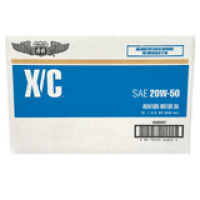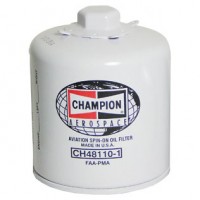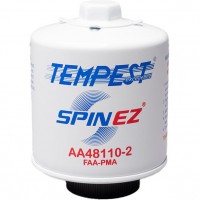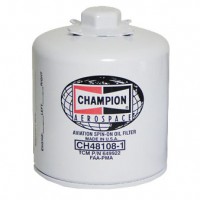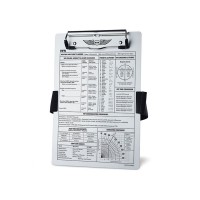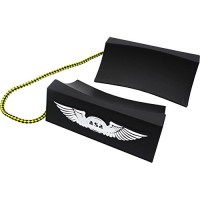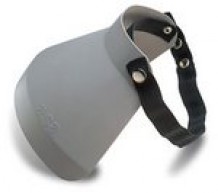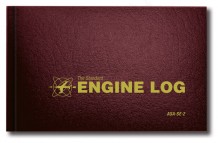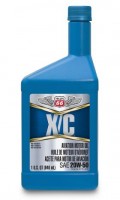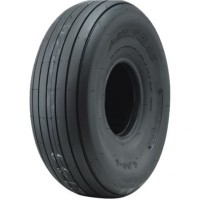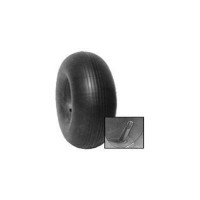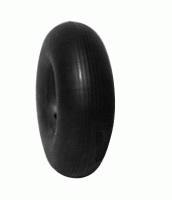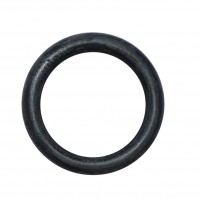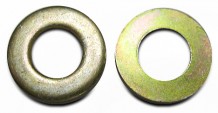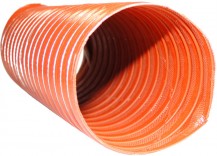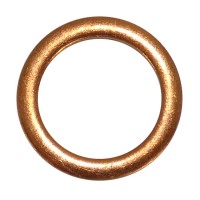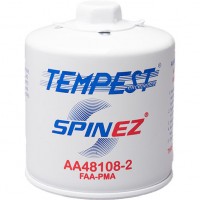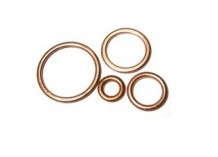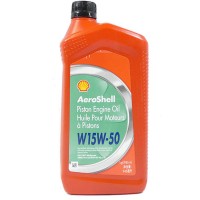Years ago one of these likely saved my life during an afternoon winter cross country flight. As a habit I always look at the CO detector after I yawn. On that day when I did I noticed that the detertor disc has turned nearly black instead of its ususal tan. I then prompty opened every window and vent and shut off the heat. Turned out there was a nearly undetectable very small hole in the muffler that the heating systems shroud uses to scavange heat from.
Robert L
 Verified Purchase
Verified Purchase
ASA Carbon Monoxide Detector
January 8, 2026
Mal M
 Verified Purchase
Verified Purchase
ASA Carbon Monoxide Detector
December 15, 2025
Dan M
 Verified Purchase
Verified Purchase
ASA Carbon Monoxide Detector
December 9, 2025
Chad M
 Verified Purchase
Verified Purchase
ASA Carbon Monoxide Detector
December 9, 2025
Good to have in the old Cessna.
Richard L
 Verified Purchase
Verified Purchase
ASA Carbon Monoxide Detector
December 6, 2025
Nice product!
Hub L
 Verified Purchase
Verified Purchase
ASA Carbon Monoxide Detector
November 29, 2025
satisfaction very good
Marius D
 Verified Purchase
Verified Purchase
ASA Carbon Monoxide Detector
October 23, 2025
Sebastien L
 Verified Purchase
Verified Purchase
ASA Carbon Monoxide Detector
October 21, 2025
Good to have
David D
 Verified Purchase
Verified Purchase
ASA Carbon Monoxide Detector
October 8, 2025
James R
 Verified Purchase
Verified Purchase
ASA Carbon Monoxide Detector
October 3, 2025
Nice item. As expected.
John L
 Verified Purchase
Verified Purchase
ASA Carbon Monoxide Detector
October 1, 2025
Every year, I get another. Can’t go wrong with simple.
Rob B
 Verified Purchase
Verified Purchase
ASA Carbon Monoxide Detector
September 26, 2025
CO detection made simple
Alan R
 Verified Purchase
Verified Purchase
ASA Carbon Monoxide Detector
September 8, 2025
Professional and great product. Good price.
Robert P
 Verified Purchase
Verified Purchase
ASA Carbon Monoxide Detector
August 23, 2025
Just peel, date, and stick—you’re good to go! 🙂
Jaspal
 Verified Purchase
Verified Purchase
ASA Carbon Monoxide Detector
August 19, 2025
Must have. Will save your life.
Dutch W
 Verified Purchase
Verified Purchase
ASA Carbon Monoxide Detector
August 18, 2025
I always have one of these fresh each year on my panel in addition to the other indicator I carry in the aircraft
Robert M
 Verified Purchase
Verified Purchase
ASA Carbon Monoxide Detector
July 10, 2025
Looks good on the cockpit and it works.
Mauricio F
 Verified Purchase
Verified Purchase
ASA Carbon Monoxide Detector
June 20, 2025
East to mount! We feel safe knowing it will change color if there is a problem.
Joseph S
 Verified Purchase
Verified Purchase
ASA Carbon Monoxide Detector
June 11, 2025
Good protection for the money
Tom M
 Verified Purchase
Verified Purchase
ASA Carbon Monoxide Detector
June 3, 2025
As per advertised.
David M
 Verified Purchase
Verified Purchase
ASA Carbon Monoxide Detector
May 28, 2025
Morgan A
 Verified Purchase
Verified Purchase
ASA Carbon Monoxide Detector
May 24, 2025
very good produce
Richard M
 Verified Purchase
Verified Purchase
ASA Carbon Monoxide Detector
May 8, 2025
Mike R
 Verified Purchase
Verified Purchase
ASA Carbon Monoxide Detector
April 11, 2025
I have used this product for years and have complete confidence in it. As always total satisfaction with Aircraft Spruce. Great company!
Scott H
 Verified Purchase
Verified Purchase
ASA Carbon Monoxide Detector
April 8, 2025
Terry J
 Verified Purchase
Verified Purchase
ASA Carbon Monoxide Detector
April 1, 2025
James I
 Verified Purchase
Verified Purchase
ASA Carbon Monoxide Detector
March 19, 2025
had these many times through out the years, good simple easy to use product. 5 stars
Peter F
 Verified Purchase
Verified Purchase
ASA Carbon Monoxide Detector
March 4, 2025
nice
Fernando S
 Verified Purchase
Verified Purchase
ASA Carbon Monoxide Detector
February 27, 2025
reliable
Larry Z
 Verified Purchase
Verified Purchase
ASA Carbon Monoxide Detector
February 25, 2025
Excellent product and great purchasing process
T C
 Verified Purchase
Verified Purchase
ASA Carbon Monoxide Detector
February 24, 2025
Needs more sticky strip on back
Stuart D
 Verified Purchase
Verified Purchase
ASA Carbon Monoxide Detector
January 20, 2025
These are great!
Always available and at a great price!
Adam M
 Verified Purchase
Verified Purchase
ASA Carbon Monoxide Detector
December 31, 2024
I would not want to be in an airplane without one and The item shipped very quickly.
Kevin R
 Verified Purchase
Verified Purchase
ASA Carbon Monoxide Detector
December 13, 2024
Paul C
 Verified Purchase
Verified Purchase
ASA Carbon Monoxide Detector
November 27, 2024
Browns A
 Verified Purchase
Verified Purchase
ASA Carbon Monoxide Detector
November 27, 2024
Dennis H
 Verified Purchase
Verified Purchase
ASA Carbon Monoxide Detector
November 9, 2024
Ok
Abbas N
 Verified Purchase
Verified Purchase
ASA Carbon Monoxide Detector
October 19, 2024
good thanks
James R
 Verified Purchase
Verified Purchase
ASA Carbon Monoxide Detector
October 3, 2024
Kawartha L
 Verified Purchase
Verified Purchase
ASA Carbon Monoxide Detector
August 28, 2024
Good product.
Nicholas B
 Verified Purchase
Verified Purchase
ASA Carbon Monoxide Detector
August 13, 2024
Put one in our plane and another in our Jeep. The muffler on the Jeep is getting old, making sure we are safe in both places.
Joseph S
 Verified Purchase
Verified Purchase
ASA Carbon Monoxide Detector
July 24, 2024
Freeland A
 Verified Purchase
Verified Purchase
ASA Carbon Monoxide Detector
June 21, 2024
Philp
 Verified Purchase
Verified Purchase
ASA Carbon Monoxide Detector
June 3, 2024
Frank W
 Verified Purchase
Verified Purchase
ASA Carbon Monoxide Detector
May 14, 2024
Delivered in three days
Thomas G
 Verified Purchase
Verified Purchase
ASA Carbon Monoxide Detector
April 30, 2024
Wing S
 Verified Purchase
Verified Purchase
ASA Carbon Monoxide Detector
April 17, 2024
Eh? It’s there.
Gary C
 Verified Purchase
Verified Purchase
ASA Carbon Monoxide Detector
April 4, 2024
Works as advertised and recovers when removed from CO environment.
Ward M
 Verified Purchase
Verified Purchase
ASA Carbon Monoxide Detector
April 3, 2024
Keeps the EQ Operators safe. Fast service at a reasonable price
City O
 Verified Purchase
Verified Purchase
ASA Carbon Monoxide Detector
March 28, 2024
Works fine
James M
 Verified Purchase
Verified Purchase
ASA Carbon Monoxide Detector
March 26, 2024
Greg
 Verified Purchase
Verified Purchase
ASA Carbon Monoxide Detector
March 10, 2024
Just right
Douglas G
 Verified Purchase
Verified Purchase
ASA Carbon Monoxide Detector
February 24, 2024
Silver S
 Verified Purchase
Verified Purchase
ASA Carbon Monoxide Detector
January 29, 2024
Ronald S
 Verified Purchase
Verified Purchase
ASA Carbon Monoxide Detector
January 11, 2024
Edwin O
 Verified Purchase
Verified Purchase
ASA Carbon Monoxide Detector
January 5, 2024
Awesome.
Rob E
 Verified Purchase
Verified Purchase
ASA Carbon Monoxide Detector
January 4, 2024
Gerard K
 Verified Purchase
Verified Purchase
ASA Carbon Monoxide Detector
December 15, 2023
Easy and quick carbon monitor
Cole B
 Verified Purchase
Verified Purchase
ASA Carbon Monoxide Detector
December 14, 2023
Peace of mind - especially during cold temp flying. Even though my Sentry ADS-B in receiver has a CO detector built in the redundancy of a 2nd source of detection is nice. These are inexpensive and can be placed anywhere in the cockpit.
Edward B
 Verified Purchase
Verified Purchase
ASA Carbon Monoxide Detector
December 13, 2023
Works OK but not as effective as electronic units, have had 2 exhaust system leaks that were detected with sufficient time to correct
Michael M
 Verified Purchase
Verified Purchase
ASA Carbon Monoxide Detector
December 5, 2023
Have not used them yet, but wanted a couple on hand and wanted to give one away so they could see what it was
Kathy L
 Verified Purchase
Verified Purchase
ASA Carbon Monoxide Detector
November 30, 2023
a good and inexpensive way to provide CO monitoring in an airplane and no batteries required!
Joseph K
 Verified Purchase
Verified Purchase
ASA Carbon Monoxide Detector
November 15, 2023
Arrived in good condition.
Thomas D
 Verified Purchase
Verified Purchase
ASA Carbon Monoxide Detector
October 31, 2023
Great product
Joseph P
 Verified Purchase
Verified Purchase
ASA Carbon Monoxide Detector
October 21, 2023
Good stuff must hv for each airplane , non electric reliable CO monitor
Anil B
 Verified Purchase
Verified Purchase
ASA Carbon Monoxide Detector
October 3, 2023
like it
Edward A
 Verified Purchase
Verified Purchase
ASA Carbon Monoxide Detector
October 3, 2023
Handy!
Donald G
 Verified Purchase
Verified Purchase
ASA Carbon Monoxide Detector
September 29, 2023
Donnie
 Verified Purchase
Verified Purchase
ASA Carbon Monoxide Detector
September 7, 2023
Pedro P
 Verified Purchase
Verified Purchase
ASA Carbon Monoxide Detector
September 2, 2023
Matthew S
 Verified Purchase
Verified Purchase
ASA Carbon Monoxide Detector
August 26, 2023
Works as designed
Vincent D
 Verified Purchase
Verified Purchase
ASA Carbon Monoxide Detector
August 19, 2023
David D
 Verified Purchase
Verified Purchase
ASA Carbon Monoxide Detector
August 10, 2023
Good to have in cockpit
Ajaypal
 Verified Purchase
Verified Purchase
ASA Carbon Monoxide Detector
July 31, 2023
Scott H
 Verified Purchase
Verified Purchase
ASA Carbon Monoxide Detector
July 13, 2023
Brian T
 Verified Purchase
Verified Purchase
ASA Carbon Monoxide Detector
July 12, 2023
Brian T
 Verified Purchase
Verified Purchase
ASA Carbon Monoxide Detector
July 12, 2023
David M
 Verified Purchase
Verified Purchase
ASA Carbon Monoxide Detector
June 30, 2023
Good for another year
Wilf S
 Verified Purchase
Verified Purchase
ASA Carbon Monoxide Detector
June 20, 2023
Item arrived promptly.
Deft E
 Verified Purchase
Verified Purchase
ASA Carbon Monoxide Detector
June 16, 2023
I do not if It works.
Mauricio F
 Verified Purchase
Verified Purchase
ASA Carbon Monoxide Detector
June 3, 2023
ENCELENT
Jose J
 Verified Purchase
Verified Purchase
ASA Carbon Monoxide Detector
May 12, 2023
Great product.
Johnnie D
 Verified Purchase
Verified Purchase
ASA Carbon Monoxide Detector
May 4, 2023
the price is right!
Maureen D
 Verified Purchase
Verified Purchase
ASA Carbon Monoxide Detector
April 28, 2023
Works as it’s should.
Lester V
 Verified Purchase
Verified Purchase
ASA Carbon Monoxide Detector
April 23, 2023
Ugur I
 Verified Purchase
Verified Purchase
ASA Carbon Monoxide Detector
April 20, 2023
These are a inexpensive safety item. I always replace at exp.date. Cant help but to test the one Im replacing, work well.
Randall K
 Verified Purchase
Verified Purchase
ASA Carbon Monoxide Detector
April 4, 2023
Magaero L
 Verified Purchase
Verified Purchase
ASA Carbon Monoxide Detector
March 15, 2023
Roberto G
 Verified Purchase
Verified Purchase
ASA Carbon Monoxide Detector
March 14, 2023
Magaero L
 Verified Purchase
Verified Purchase
ASA Carbon Monoxide Detector
March 2, 2023
I dont know if these work as advertised. Ive never had a CO leak.
Eaa C
 Verified Purchase
Verified Purchase
ASA Carbon Monoxide Detector
March 1, 2023
Magaero L
 Verified Purchase
Verified Purchase
ASA Carbon Monoxide Detector
February 21, 2023
Dark spot in carbon monoxide detector may lead to you becoming a Dark spot in some farm field.
Willamette A
 Verified Purchase
Verified Purchase
ASA Carbon Monoxide Detector
February 3, 2023
Chad M
 Verified Purchase
Verified Purchase
ASA Carbon Monoxide Detector
February 1, 2023
Steve S
 Verified Purchase
Verified Purchase
ASA Carbon Monoxide Detector
January 30, 2023
Looks like it should work fine ,
Jerry V
 Verified Purchase
Verified Purchase
ASA Carbon Monoxide Detector
January 30, 2023
Always a great product to have!
Scott F
 Verified Purchase
Verified Purchase
ASA Carbon Monoxide Detector
January 19, 2023
Magaero L
 Verified Purchase
Verified Purchase
ASA Carbon Monoxide Detector
December 31, 2022
Ok
Douglas P
 Verified Purchase
Verified Purchase
ASA Carbon Monoxide Detector
November 19, 2022
as advertised
Ron W
 Verified Purchase
Verified Purchase
ASA Carbon Monoxide Detector
November 15, 2022
A must have for any airplane cabin.
Paul R
 Verified Purchase
Verified Purchase
ASA Carbon Monoxide Detector
October 16, 2022
Prompt arrival. These are great Christmas stocking stuffers for friends at the airport.
John G
 Verified Purchase
Verified Purchase
ASA Carbon Monoxide Detector
September 27, 2022
I have not use it yet.
Emmanuel Z
 Verified Purchase
Verified Purchase
ASA Carbon Monoxide Detector
September 2, 2022
looks like it should work - at the price its worth having
Joseph S
 Verified Purchase
Verified Purchase
ASA Carbon Monoxide Detector
September 1, 2022
Magaero L
 Verified Purchase
Verified Purchase
ASA Carbon Monoxide Detector
August 10, 2022
fyrst time buying this, time will tell. look ok and have a pach of double tape ready for your dashboard
Ragnar E
 Verified Purchase
Verified Purchase
ASA Carbon Monoxide Detector
August 2, 2022
Steve L
 Verified Purchase
Verified Purchase
ASA Carbon Monoxide Detector
July 26, 2022
Martin B
 Verified Purchase
Verified Purchase
ASA Carbon Monoxide Detector
July 22, 2022
Richard P
 Verified Purchase
Verified Purchase
ASA Carbon Monoxide Detector
July 7, 2022
Just what I wanted and arrived on time.
Thomas D
 Verified Purchase
Verified Purchase
ASA Carbon Monoxide Detector
June 25, 2022
Nice dragger…
Lee L
 Verified Purchase
Verified Purchase
ASA Carbon Monoxide Detector
June 23, 2022
Great value for price
Joe B
 Verified Purchase
Verified Purchase
ASA Carbon Monoxide Detector
June 22, 2022
Scott M
 Verified Purchase
Verified Purchase
ASA Carbon Monoxide Detector
June 22, 2022
I’ve used these for several years and they work well. I chose regular 1st class mail and it arrived pretty quickly.
Gray D
 Verified Purchase
Verified Purchase
ASA Carbon Monoxide Detector
June 13, 2022
Good value and easy to use.
Jean M
 Verified Purchase
Verified Purchase
ASA Carbon Monoxide Detector
June 8, 2022
Mauricio M
 Verified Purchase
Verified Purchase
ASA Carbon Monoxide Detector
June 3, 2022
Martin P
 Verified Purchase
Verified Purchase
ASA Carbon Monoxide Detector
May 21, 2022
Good product
Bruce C
 Verified Purchase
Verified Purchase
ASA Carbon Monoxide Detector
May 2, 2022
Just as ordered
Bruce C
 Verified Purchase
Verified Purchase
ASA Carbon Monoxide Detector
April 26, 2022
Came with a piece of tape on only one upper corner. Wouldve liked a piece top and bottom to secure it.
Chad W
 Verified Purchase
Verified Purchase
ASA Carbon Monoxide Detector
April 21, 2022
Arrived promptly.
Roger J
 Verified Purchase
Verified Purchase
ASA Carbon Monoxide Detector
April 20, 2022
All good.
Petr S
 Verified Purchase
Verified Purchase
ASA Carbon Monoxide Detector
March 7, 2022
Its in the plane. So far nothing and Im here doing this review. I guessing Im still alive.
Anthony B
 Verified Purchase
Verified Purchase
ASA Carbon Monoxide Detector
February 15, 2022
Nice detector card. Like the one year life. Hope it lasts a year so I can stick a new one on every annual. If it doesnt last a year they are cheap enough to replace.
Bill C
 Verified Purchase
Verified Purchase
ASA Carbon Monoxide Detector
February 11, 2022
Been using these for long time. Did save my bacon once when mechanic improperly install exhaust.
Greg E
 Verified Purchase
Verified Purchase
ASA Carbon Monoxide Detector
February 2, 2022
Yep
Les H
 Verified Purchase
Verified Purchase
ASA Carbon Monoxide Detector
January 22, 2022
Aaron
 Verified Purchase
Verified Purchase
ASA Carbon Monoxide Detector
January 19, 2022
Have used these in various aircraft. All seem to work well. Do not touch the indicator tab with a bare finger. Excellent deliver times. Thx.
Roger J
 Verified Purchase
Verified Purchase
ASA Carbon Monoxide Detector
January 14, 2022
Omar S
 Verified Purchase
Verified Purchase
ASA Carbon Monoxide Detector
January 11, 2022
We use these in our Heavy Equipment to detect exhaust leaks. seem to work well. only one has changed color because of exhaust and the operator was thankful
City O
 Verified Purchase
Verified Purchase
ASA Carbon Monoxide Detector
January 6, 2022
As published.
Federico F
 Verified Purchase
Verified Purchase
ASA Carbon Monoxide Detector
December 21, 2021
Like that it lasts a yr instead of 30 days. Like this type since I can stick it in ashtray on door do I can see it easily but still out of way
Laine G
 Verified Purchase
Verified Purchase
ASA Carbon Monoxide Detector
December 3, 2021
Received quickly as expected.
Guy O
 Verified Purchase
Verified Purchase
ASA Carbon Monoxide Detector
December 1, 2021
Applies easy, stays on for a year, peels off easy when you need to swap in a new one. It hasnt turned black and I havent died of CO poisoning. It must be working.
Benjamin J
 Verified Purchase
Verified Purchase
ASA Carbon Monoxide Detector
November 29, 2021
V. Good just like previous ones I purchased and they worked very well.
G. B
 Verified Purchase
Verified Purchase
ASA Carbon Monoxide Detector
November 29, 2021
we use these in our heavy equipment and snow removal equipment. very effective safety item
City O
 Verified Purchase
Verified Purchase
ASA Carbon Monoxide Detector
November 29, 2021
Robin C
 Verified Purchase
Verified Purchase
ASA Carbon Monoxide Detector
November 26, 2021
Safer level of air.
Walter B
 Verified Purchase
Verified Purchase
ASA Carbon Monoxide Detector
November 25, 2021
Leonardo J
 Verified Purchase
Verified Purchase
ASA Carbon Monoxide Detector
November 18, 2021
Now I fly in cooler weather with cabin heat and peace of mind.
Garry S
 Verified Purchase
Verified Purchase
ASA Carbon Monoxide Detector
November 12, 2021
We use these in our Classic Car Collection! They are great!
Adam M
 Verified Purchase
Verified Purchase
ASA Carbon Monoxide Detector
November 11, 2021
Travis E
 Verified Purchase
Verified Purchase
ASA Carbon Monoxide Detector
November 9, 2021
Worth the money. Good for one year after opening.
Joseph S
 Verified Purchase
Verified Purchase
ASA Carbon Monoxide Detector
October 23, 2021
Inexpensive and easy to use. Weve been using them for years.
Mark B
 Verified Purchase
Verified Purchase
ASA Carbon Monoxide Detector
October 19, 2021
Dan C
 Verified Purchase
Verified Purchase
ASA Carbon Monoxide Detector
October 9, 2021
I would not want to fly without one of these mounted. Cheap protection against a developing exhaust leak. Need replacement more frequently than annual if you have a damp hanger.
Ted L
 Verified Purchase
Verified Purchase
ASA Carbon Monoxide Detector
October 1, 2021
Mark L
 Verified Purchase
Verified Purchase
ASA Carbon Monoxide Detector
October 1, 2021
Detector is good but i have Never received this one :( May be lost on the way
Getpart L
 Verified Purchase
Verified Purchase
ASA Carbon Monoxide Detector
September 30, 2021
Good I assume, hasn’t signaled any CO yet
Randy S
 Verified Purchase
Verified Purchase
ASA Carbon Monoxide Detector
September 19, 2021
Hugh F
 Verified Purchase
Verified Purchase
ASA Carbon Monoxide Detector
September 14, 2021
works as advertised
Charles T
 Verified Purchase
Verified Purchase
ASA Carbon Monoxide Detector
September 14, 2021
these are as good as insurance
Lynn E
 Verified Purchase
Verified Purchase
ASA Carbon Monoxide Detector
August 26, 2021
Steve A
 Verified Purchase
Verified Purchase
ASA Carbon Monoxide Detector
August 4, 2021
Have not yet installed this unit.
Ben G
 Verified Purchase
Verified Purchase
ASA Carbon Monoxide Detector
July 31, 2021
Excellent. When I regained consciousness I could easily tell what put me out.
The R
 Verified Purchase
Verified Purchase
ASA Carbon Monoxide Detector
July 3, 2021
Très bon
Jean-guy B
 Verified Purchase
Verified Purchase
ASA Carbon Monoxide Detector
June 19, 2021
Just what I needed.
Richard D
 Verified Purchase
Verified Purchase
ASA Carbon Monoxide Detector
June 8, 2021
Hugues V
 Verified Purchase
Verified Purchase
ASA Carbon Monoxide Detector
May 28, 2021
Perfect piece of mind.
Kirkpatrick D
May 6, 2021
I purchased one of these for my Toyota SUV that has over 400K miles on it. Weve been using these in our airplanes over the years. They used to be the primary CO detector, now we use them as a backup to the CO Detector on the Sentrys. The Toyota still runs good as ever and I like to have this in the cabin with our two year old daughter riding in there now. It gives me peace of mind.
Beachpilot
March 16, 2021
This is a great device, especially in areas where its sometimes too cold for the electronic ones to work. I remember years ago they had similar ones in the school buses.
They shipped it first class mail, so the shipping rate was reasonable. Thank you very much Aircraft Spruce and Specialty Co.
Kenneth D
February 24, 2021
good product
Soframo
February 22, 2021
Great product in its own sealed packaging so it doesn’t accidentally come open during shipping.
Scott N
January 28, 2021
It’s a simple easy to use safety device, to alert you of a silent killer!
Dennis
December 29, 2020
I have had these on my Cardinal. Im no longer flying, but put one on my Toyota.
Mike W
December 16, 2020
just what I wanted.
Thomas
October 5, 2020
Product as shown and described, fast shipping and well packaged. Would buy again.
Joseph H
October 5, 2020
x
Kent I
September 24, 2020
I use this in addition to having a battery operated Foreflight Sentry CO detector. Just in case the battery dies I then have a simple backup.
Make sure you integrate looking at this detector as part of your instrument scan!
Pascal F
July 16, 2020
Good tool to have in the cockpit.
Ravinder D
June 23, 2020
Great product
Michael N
April 9, 2020
As with all products I have purchased from Aircraft Spruce, they are great quality at a very good price. I will keep buying from them.
David R
February 29, 2020
Twice in my flying experience one of these has saved the day, both times due to an exhaust leak brought in through the cabin heater. Smelled nothing, felt no symptoms, just noticed the dot was turning black. I immediately shut off the heater, opened the cold air vents and landed ASAP. Both times the dot had resumed its normal color by the time I had landed.
Randy
December 19, 2019
Every cockpit should have some sort of carbon monoxide detection.
Mike S
February 15, 2019
Great unit thanks
Darren B
March 30, 2017
Cameron I
 Verified Purchase
Verified Purchase
ASA Carbon Monoxide Detector
December 6, 2023
These work as expected.
Ronnie H
 Verified Purchase
Verified Purchase
ASA Carbon Monoxide Detector
October 27, 2023
Timothy H
 Verified Purchase
Verified Purchase
ASA Carbon Monoxide Detector
November 22, 2022
Works as expected.
Michael L
 Verified Purchase
Verified Purchase
ASA Carbon Monoxide Detector
July 15, 2022
One of these probably saved my life once on a long winter flight. Yawned, by habit looked over to detector, was very dark in color. Shut off heater, opened window and all vents, and landed at nearest airport. Hole found in muffler. Only negative, besides lack of audible warning, is that it must be changed often. Never fly without a CO detector.
Robert L
 Verified Purchase
Verified Purchase
ASA Carbon Monoxide Detector
June 7, 2022
James I
 Verified Purchase
Verified Purchase
ASA Carbon Monoxide Detector
April 19, 2022
The new detector keeps falling off of the instrument panel. Ill need to get some double sided tape. Otherwise, the detector is OK.
Robert S
June 5, 2021
Havent installed yet.
Barry D
April 12, 2021
Simple, inexpensive. No immediate alert for spike in CO level.
Craig B
November 20, 2020
Doesnt work as quick as the electronic ones, and its sensitive to hot temperatures. For the price though, it does the job.
Richard
September 21, 2017
This CO Monitor is marginal at best. Its better than nothing, but nearly the same as nothing. After receiving it, I did a test using my truck exhaust, I couldnt hold it long enough for it to turn color. Im sure it will, but it takes far too long. If Im exposed, I want to know right away, therefore, after my test, I got a new digital one that tested well.
Richard W
 Verified Purchase
Verified Purchase
ASA Carbon Monoxide Detector
August 15, 2025
Though I didn’t expect to use the poorly placed adhesive strip built into the unit, I thought it would at least hold itself in place for a minute while I measured for the improvement I improvised. Why bother putting anything there at all? Save us all a few cents and let us invent our own methods.
Rob B
 Verified Purchase
Verified Purchase
ASA Carbon Monoxide Detector
September 21, 2024
Not bad for what it is. Since C02 will first make you stupid and sleepy before it kills you I REALLY doubt one would notice the darkened spot before the final spin-stall. My last two arrived spoiled. Since my life depends on the thing I decided Id rather have an electronic CO2 detector with an audible alarm and have ditched the stick on things. Dont be cheap, buy a real detector.
Peter T
March 9, 2023
Lynne M
 Verified Purchase
Verified Purchase
ASA Carbon Monoxide Detector
July 16, 2021
Product will probably work fine and indicate the presence of CO in the cockpit alright. But as Ive read in other reviews . . . the sticky tape to hold it in place is essentially non-existent.
Iowa P
October 13, 2020
Why is the sticky pad so ineffective? I was disappointed in that. Otherwise, its a cheap detector, I assume it works as advertised.
Alan W
May 10, 2019
Didn’t last 12 mos as expected - good for about 8 mos
Sherman C
December 15, 2018
Just good for few months 3-4
Max
October 14, 2013
These are worth what you pay for them :( short term piece of mind.
Aircraft R
 Verified Purchase
Verified Purchase
ASA Carbon Monoxide Detector
May 10, 2024
Never got to use it. The adhesion strip on the back is paper thin almost ensuring it won’t adhere to anything with any wave. They should make this with a padded adhesion strip and it would accept all situations
Matt
December 11, 2020
Great idea, however the double sided tape that comes attached doesnt stick worth SQUAT!!
C177
February 23, 2020
TWO COMPLAINTS
1. The tiny strip of two-sided tape thats used to mount the thing is too small to be really effective, and, it wont adhere to the plastic or metals that we have in our single-engine Cessnas and Pipers.
2. There must be a special place in hell for the designers of the packaging. It takes a pair of scissors or a knife to open the package.
Jim C
May 23, 2022
Mounting sticker on back does not work. Thing is useless
Michael
 Verified Purchase
Verified Purchase
ASA Carbon Monoxide Detector
October 8, 2021
I ordered two detectors. Both detectors arrived in a sealed package but indicated carbon monoxide. I opened the package expecting that the indicator would turn white once exposed to fresh air but neither cleared. It costs more to ship them back then it cost to purchase them.
Datchair L
October 25, 2022
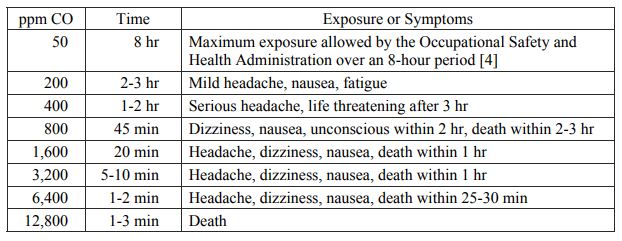


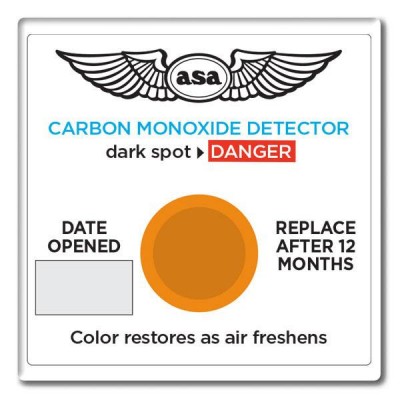





 FREE Shipping
FREE Shipping
